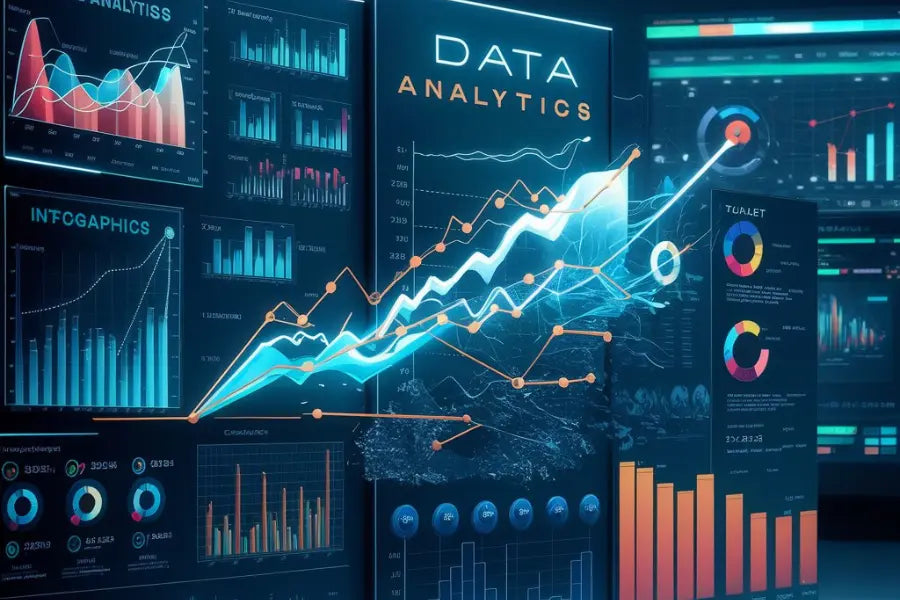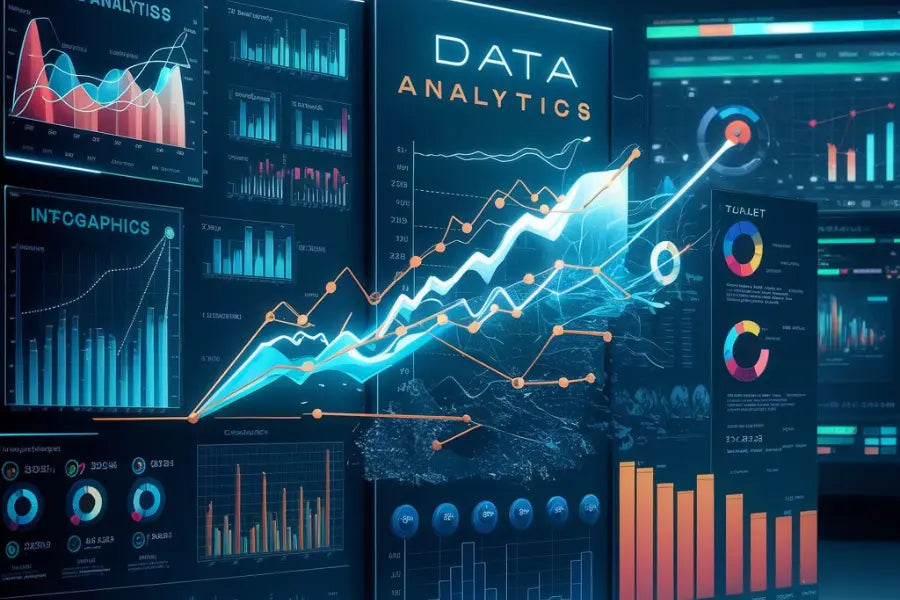Marcoloja
Data Analytics and Visualization
Data Analytics and Visualization
Couldn't load pickup availability
Share
If you want to start with data analytics and visualization, then this Data Storytelling course bundle is a good place to begin. This bundle includes ten full beginner and advanced courses in Excel PivotTable, Microsoft Power BI, Alteryx, Tableau, and Qlik Sense that will equip you with the best tools to master data visualization techniques.
What's included?
PivotTables for Beginners
How to clean and prepare your data
Creating a basic PivotTable
Using the PivotTable fields pane
Adding fields and pivoting the fields
Formatting numbers in PivotTable
Different ways to summarize data
Grouping PivotTable data
Using multiple fields and dimension
The methods of aggregation
How to choose and lock the report layout
Applying PivotTable styles
Sorting data and using filters
Create pivot charts based on PivotTable data
Selecting the right chart for your data
Apply conditional formatting
Add slicers and timelines to your dashboards
Adding new data to the original source dataset
Updating PivotTables and charts
Advanced PivotTables
How to do a PivotTable (a quick refresher)
How to combine data from multiple worksheets for a PivotTable
Grouping, ungrouping, and dealing with errors
How to format a PivotTable, including adjusting styles
How to use the Value Field Settings
Advanced Sorting and Filtering in PivotTables
How to use Slicers, Timelines on multiple tables
How to create a Calculated Field
All about GETPIVOTDATA
How to create a Pivot Chart and add sparklines and slicers
How to use 3D Maps from a PivotTable
How to update your data in a PivotTable and Pivot Chart
All about Conditional Formatting in a PivotTable
How to create amazing-looking dashboards
Power BI for Beginner:
What is Power BI and why you should be using it.
To import CSV and Excel files into Power BI Desktop.
How to use Merge Queries to fetch data from other queries.
How to create relationships between the different tables of the data model.
All about DAX including using the COUTROWS, CALCULATE, and SAMEPERIODLASTYEAR functions.
All about using the card visual to create summary information.
How to use other visuals such as clustered column charts, maps, and trend graphs.
How to use Slicers to filter your reports.
How to use themes to format your reports quickly and consistently.
How to edit the interactions between your visualizations and filter at visualization, page, and report level.
Power BI Intermediate:
Importing and transforming data in Power Query
Importing Excel, text, and CSV files and combining files
Enabling/disabling load and report refresh
Resolving data import errors
Data modeling, relationship types, and troubleshooting relationship issues
Measures vs. calculated columns
Creating a date table with DAX
Creating additional and conditional columns
Using the ROUNDUP and SUMX functions
Creating quick measures and key measures tables
The DAX - CALCULATE function
Tables vs. matrix tables
Formatting visualizations and applying conditional formatting
Using column, line, and map charts
Gauge and card visualizations
Using slicers and filters and applying design elements
Creating a shared workspace in Power BI service
Building reports and dashboards
Pinning visualizations to the dashboard
Setting up scheduled refreshes
Alteryx for Beginners:
Using Alteryx workflows to cut out repetitive tasks
Building visual workflows in Alteryx
How to make the most of 'Favorite Tools' as core Alteryx building blocks
Filtering data in Alteryx
Using the basic functions in Alteryx to match data
How to dynamically rename datasets
How to parse data in Alteryx
Creating reports in Alteryx that run on demand
Using the predictive tools in Alteryx to perform data analysis
Building a k-centroid clustering model using Alteryx
Creating a logistic regression in Alteryx
Making a decision tree-based regression in Alteryx
Constructing a random forest-based model
Alteryx Advanced:
Using multiple files and Calgary
Sampling data and using wild matches
Data cleansing, manipulation, binning, and grouping
Using RegEx (regular expressions) and parsing XML
Working with In-Database
Blending, selecting, and summarizing data
Take your apps and macros to the next level
Using iterative and batch macros
Understanding app errors and conditions
Customizing apps and macros
All about Machine Learning and the Alteryx Intelligence Suite
Tableau for Beginners:
What Tableau is and the product suite
What business intelligence is
The Tableau interface and its major functions
Which data structures are suitable for Tableau
How Tableau reads and categorizes data
Different data concepts and theory
How to connect and manage data sources in Tableau
How to navigate the Tableau workspace
How to build a view and different chart types in Tableau
How to create a dashboard in Tableau
How to publish and share a workbook
How to use calculated fields in Tableau
How to use numeric, string, conditional, and analytical expressions/functions in Tableau
Tableau Advanced:
Parameters and sample use cases
Level of Detail (LOD) expressions
Working with groups and sets
Use of spatial functions
Advanced filters
Table calculations
How to add interactivity using actions
Animating your visualizations
Advanced Tableau charts—circular, sunburst, bump, funnel, candlestick, and Sankey charts
Building geospatial dashboards and sales dashboards
Creating dashboards that utilize radial charts
Qlik Sense for Beginners:
The difference between Qlik Sense and Qlik View
How to load data in Qlik Sense
How to create and upload apps in Qlik Sense
All about the different charts and graphs available in Qlik Sense
All about Tables and Pivot Tables in Qlik Sense
How to create your analysis in the Story Telling tab
About numeric and string functions in Qlik Sense
How to use the date and time formatting functions
How to use Conditional Functions
How to combine tables using JOIN, KEEP and CONCATENATE
How to use different charts and tables
How to use the Qlik Sense Geo Analytics tools (maps)
Qlik Sense Advanced
How to use system and user-defined variables effectively
How to use a variable’s input to create dynamic dimensions and measures
To maximize the dynamic loading feature to import data from diverse sources in numerous ways
To write powerful and elegant scripts and subroutines
How to make the most of Qlik Sense’s conditional functions, including Match and Pick and to work with the values the functions return.
How to use the Alternate States feature to create and compare visualizations
To use Cascading Style Sheets (CSS) to design highly customized visualizations and dashboards
To use geo-analytics and spatial functions to work with location-based data
How to layer components with functions such as the Bubble, Line, Area, Heatmap, and Geodata Layers.
To transform data with Qlik’s toolbox of analytical functions to perform geometric, aggregating, route-based, and look-up operations.
This course bundle includes:
50+ hours of video tutorials
390+ individual video lectures
Certificate of completion
Course and exercise files to help you follow along


